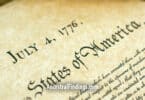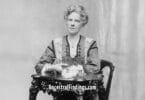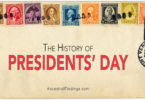Labor Day arrives each September, signaling the close of summer and the approach of autumn. Many people see it as a three-day weekend for rest, cookouts, or back-to-school shopping. Yet beneath the sales and celebrations lies a deeper meaning—one that connects directly to the lives of our ancestors. It is a holiday born of struggle, built on sacrifice, and sustained by the ongoing dignity of work.
Last year, I looked back at the history of how Labor Day began and why it was created. This year, I want to look at it in a more personal way—through the eyes of our ancestors, through the forgotten jobs they once held, through the local parades and traditions they passed down, through the transformation of the holiday itself, through family stories of work, and through the immigrant experience that shaped the American workforce. Taken together, these perspectives show us why Labor Day is more than just a long weekend. It is a remembrance of the labor that shaped our families, our communities, and our nation.
Through Our Ancestors’ Eyes
To understand Labor Day, it helps to picture what it meant to those who first observed it. Imagine standing in New York City in 1882, when the very first Labor Day parade took place. Ten thousand workers took an unpaid day off, risking their jobs to march for recognition. They carried banners calling for an eight-hour day, safer conditions, and the right to be treated as human beings rather than replaceable machines. For them, Labor Day was not just symbolic—it was a statement of survival.
By 1910, the holiday had begun spreading across the country. Picture a coal miner in West Virginia who has spent the week underground, working twelve hours at a stretch. He comes home blackened with dust, his lungs filling with coal soot. Labor Day offers him a rare day to breathe fresh air, eat with his family, and perhaps enjoy a picnic organized by the local union. The day may not bring money, but it brings dignity.
Move forward to the 1940s. A machinist in Detroit is working long hours producing equipment for World War II. His Labor Day is filled with patriotic speeches and union rallies, reminding him that his work is both a contribution to the war effort and a continuation of the long struggle for workers’ rights. He is proud, tired, and determined to carry on.
In the 1970s, a schoolteacher in Ohio sees Labor Day as the final day of summer before another year begins. She spends it preparing lessons, grateful for the stability of her profession but aware of the challenges of overcrowded classrooms and limited resources. For her, the holiday is a pause before another year of work shaping young lives.
Women’s work deserves special recognition here, too. In textile mills, laundries, and kitchens, women often labored just as long and hard as men. Many also bore the double burden of working outside the home while still managing households without the conveniences of today. Labor Day was as much their holiday as anyone’s, even if their efforts were less publicly recognized.
For genealogists, these stories are more than imagination. Occupations appear in census records, draft cards, and city directories. Old photographs sometimes show tools of the trade or uniforms. Tracing what our ancestors did for a living allows us to see how they may have spent Labor Day—and what sacrifices they made so future generations could enjoy it.
Forgotten and Unusual Jobs
Another way to see Labor Day anew is by looking at jobs that once defined communities but have since vanished. Every occupation listed in an old census once represented a real person’s daily labor, though many of those jobs would puzzle us today.
Take lamplighters, who lit and extinguished gas lamps in cities before electricity. Each evening, they walked miles with long poles, sparking flames that lit dark streets. Or ice cutters, who carved blocks of ice from frozen rivers each winter, storing them in sawdust-packed icehouses so people could keep food cool during summer months. Switchboard operators once managed every phone call, plugging wires into panels at lightning speed to connect conversations.
Some jobs were dirty and dangerous. Tanneries, for example, used harsh chemicals and animal hides to produce leather. Ulysses S. Grant himself, long before he became president, worked as a boy in his father’s tannery. His job, like many others in the 19th century, was hard, unpleasant, and essential.
Others were fleeting. Telegraph operators were once vital to global communication, but the telegraph has long since fallen silent. Milk deliverymen, ragpickers, and streetcar conductors were once familiar figures in towns and cities. Today they survive only in family stories, old city directories, and photographs tucked away in archives.
These forgotten jobs remind us how quickly the world of work changes. What seems secure today may disappear tomorrow, replaced by technology or shifting needs. Labor Day is a chance to honor not just the jobs we know, but those that once sustained families and now live only in memory.
Local Celebrations and Traditions
While Labor Day became a national holiday, its spirit was often most alive at the local level. In Cincinnati, historical newspapers describe parades stretching down Vine Street, with unions marching under colorful banners. Carpenters carried their tools, machinists rolled along with engines they had built, and brewers marched behind wagons filled with barrels of beer. Families lined the streets, cheering on relatives and neighbors.
Baseball games were common, pitting one union against another. Tug-of-war contests, band concerts, and speeches filled the day. In smaller Ohio towns, families gathered in parks for picnics. A few communities held fairs with rides and exhibitions of local craftsmanship.
These celebrations connected labor not just to politics, but to community pride. Each city and town celebrated in its own way, reflecting the trades and industries that defined it. For genealogists, finding a description of a local Labor Day parade in an ancestor’s town can provide a rare glimpse into what their world looked like.
From Labor to Leisure
Over the decades, the meaning of Labor Day shifted. The early parades were highly political, demanding fair treatment for workers. But as conditions improved—eight-hour days, weekends, and safer workplaces—the holiday slowly became less about protest and more about rest.
By the 1920s and 1930s, parades often blended with community picnics. In the postwar years, the rise of consumer culture reshaped the holiday again. Department stores began using the long weekend to launch back-to-school sales, transforming Labor Day into a commercial event.
By the 1980s, advertisements for “Labor Day blowouts” were everywhere. Yet even in this new form, the spirit of the holiday endured. After all, the right to enjoy leisure—time off to rest, shop, or gather with family—was one of the victories the labor movement fought for. Many ancestors never knew the luxury of paid holidays. In that sense, every picnic and barbecue today carries a link back to their struggles.
Family Stories of Work
For me, Labor Day always brings back memories of my own family’s labor. My grandparents worked jobs that demanded much of them, whether on farms, in factories, or in trades. My parents carried on that tradition, working steady jobs to keep the family secure. Their stories are reminders that behind every family tree are generations who labored, often without recognition, to make life better for those who followed.
Think about your own ancestors. Perhaps you had a great-grandparent who worked in a steel mill, or a grandmother who sewed clothes at home to earn extra money. Maybe your family has stories of a farmer rising before dawn to care for livestock, or a coal miner coming home with black dust covering his clothes. Each of these stories is part of the meaning of Labor Day.
Genealogists can uncover these details in many ways. Census records list occupations, often surprising us with how different they are from today’s jobs. Old employment records, union membership cards, or newspaper clippings sometimes reveal strikes, promotions, or even accidents at work. Collecting these pieces creates a fuller picture of who our ancestors were—not just in name and date, but in the work that defined their days.
Immigration and Labor
No story of American labor is complete without immigration. The United States was built by immigrant hands. Irish workers dug canals and laid railroad tracks. Germans built breweries and worked in factories. Italians quarried stone and laid brick. Chinese immigrants risked their lives to build the transcontinental railroad. Waves of immigrants from Eastern Europe filled coal mines, textile mills, and steel factories.
They did hard, dangerous, often thankless jobs. Many lived in crowded boardinghouses, struggling to make ends meet while sending money home. Some faced discrimination, violence, or laws meant to exclude them. Yet their labor laid the foundation for industries that defined America.
Strikes often revealed the power of immigrant workers. The 1912 “Bread and Roses” strike in Lawrence, Massachusetts, led largely by immigrant women in textile mills, demanded not just fair pay but dignity. Their courage led to improved conditions, proving that labor rights were not given—they were earned.
For genealogists, these stories are often personal. Many of us descend from these immigrant laborers. Their sacrifices gave us the chance to live differently. Labor Day, in this light, is as much an immigrant holiday as an American one.
Conclusion
Labor Day has shifted over time, from marches and parades to cookouts and sales. But its heart remains the same: honoring the work of ordinary people. It is about the coal miner and the machinist, the teacher and the nurse, the lamplighter and the ice cutter, the immigrant who arrived with nothing but a willingness to labor, and the families who endured hard days to give their children brighter tomorrows.
As you celebrate this Labor Day, I encourage you to look at your own family’s story of work. Ask older relatives about the jobs they held. Search census records for the occupations of ancestors. Think about how their labor shaped the life you live today.
Labor Day is not just a holiday—it is a bridge between the past and the present. It is a chance to remember the sacrifices of those who came before us, to honor the work that built our families and communities, and to reflect on the dignity of labor itself.






